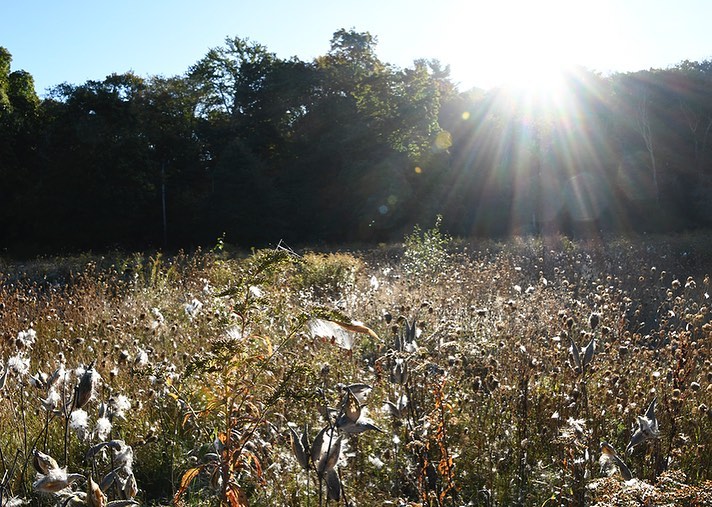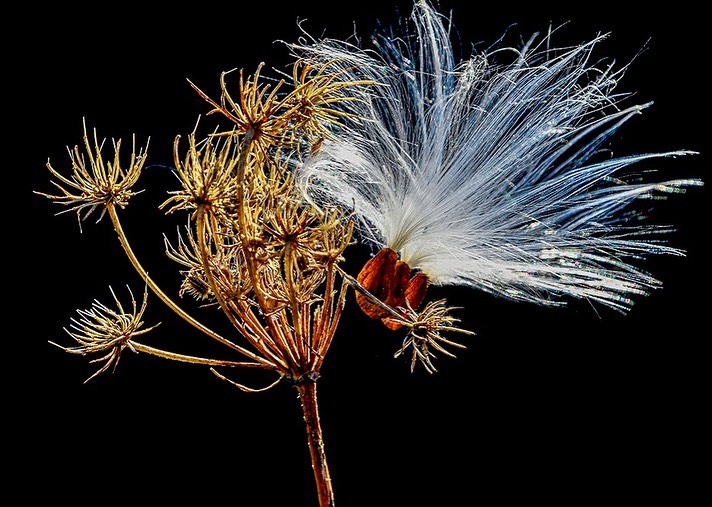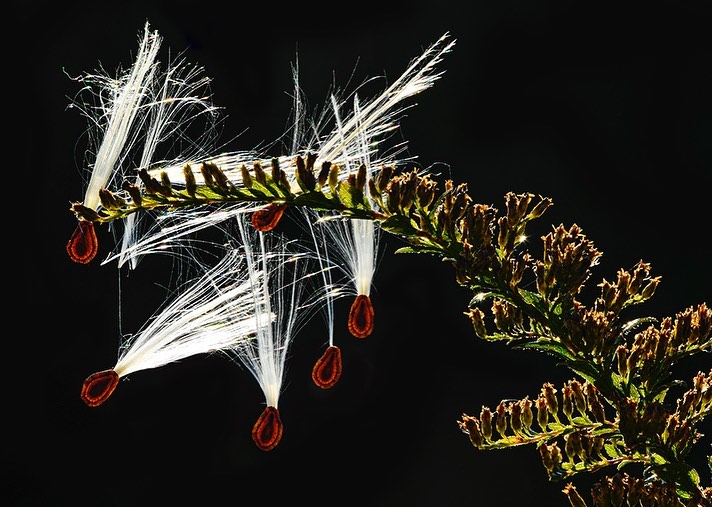East of the Rockies, from mid-summer to fall, photographers play cat and mouse with the beautiful Monarch butterflies, butterflies whose unmistakeable orange wings and their black veining are bring a ‘smile’ to both backyard gardens and wild meadows everywhere, but by late October, seeming to coincide with Daylight Savings Time, the Monarchs turn towards the south, casting their wings upon southern winds, eventually finding refuge in the oyamel fir trees, trees unique to Mexico, 2,500 miles to the south. Despite their absence, we are reminded of their presence by an event, that is arguably even more ‘magical’ then the flight of the Monarch and that would be the ‘hatching’ and subsequent flight of the Milkweed seed heads, seed heads that only a few months ago were magenta colored flowers, seed heads now taking flight in a similar abundance, but at distances far less traveled, distances measured in feet, not thousand of miles, seed heads, but a few, will take root and come late spring of the following year, the banquet is ready for the Monarch’s return.

I spent a wonderful morning near Concord, MA in such a meadow and the early morning backlight allowed for some striking images of great contrast. Key to exposures like this are a carefully chosen point of view, since backlight almost always delivers pockets of ‘darkness’ and you should have no trouble finding backlit seed heads and other nearby subjects where you can easily compose them against the ‘dark’...in the third image you can see a great deal of backlit seed heads and an equal measure of ‘darkness’ to work with. Meter for the BRIGHT, macro lens or close-focus with the aid of the Canon 500D closeup filter, apertures around F/16-F/32, ISO’s at 200-400 if hand-holding, but if on tripod, consider 50 ISO...most of all SET YOUR ALARM to allow your arrival into the meadow a few minutes before sunrise and of course ENJOY the moment and you keep shooting!




No Comments